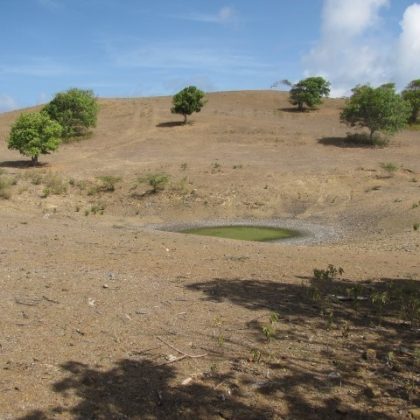Climate stress: What are the economic impacts on European dairy cow farms?
The paper “Influence of climate stress on technical efficiency and economic downside risk exposure of EU dairy farms“, published in The Journal of Agricultural Science, has been chosen as the latest Editorial Highlight and is freely available to download for one month.
This paper evaluates the influence of heat and drought stress on the technical efficiency and economic downside risk of dairy cow farms in 22 EU countries over the period 2007-2013.
Latent Class Analysis (LCA) was used to group NUTS2 regions into classes representing similar climatic conditions. This resulted in 5 lowland classes, while all upland farms were grouped into a single class. Therefore, 6 climatic classes were assessed, with the following geographically descriptive names: North Atlantic (NAT), West Atlantic (WAT), Boreal (BOR), Continental (CON), South (SOU) and Upland (UPL).
To account for heat stress, the number of occurrences when there were at least 3 consecutive days of exposure to high THI was calculated. Different THI thresholds were assigned to the classes: A threshold of 60 was selected for NAT and BOR; 64 for WAT; and 68 for CON, SOU, and UPL. To account for drought stress, a threshold of 40 consecutive dry days was selected in most of the classes apart from NAT (30 days), and SOU (60 days).
Technical efficiency was estimated using a ‘true-fixed’ effect stochastic frontier model and by using the annual production of milk per dairy cow as dependent variable. Economic downside risk was calculated as the possible decrease of the gross margin in one year compared to the average over the period 2007-2013.
Results show very high efficiency scores across the 6 climatic classes and farm systems, ranging from 0.88 in SOU to 0.96 in NAT. In the WAT, BOR, SOU and UPL classes, drought is negatively and significantly associated with efficiency in a given year t. Drought has no significant effect in CON, while it has a delayed significant negative effect in NAT for year t+1 (but positive in year t). The delayed effect of drought observed in the NAT class could be due to a shortage of forage stock in the subsequent year, potentially causing an increase in feed costs per cow. Heat was also negatively and significantly associated with efficiency in most of the classes.
Drought had a significant negative effect on economic downside risk in BOR, CON, SOU, and UPL. However, an unexpected significant positive effect of drought was found in NAT and WAT in the current year, which may indicate a negative role played by excessive rainfall in those relatively humid classes present in the analysis, with an average daily precipitation level of 2.99 and 2.27 mm over 2007-2013, respectively. Heat had a significant negative effect on economic downside risk in all classes.
In a global warming scenario in which climatic stress is expected to increase in the near future, appropriate management and innovation strategies to mitigate the effects of heat and drought are needed to limit the negative economic implications on the European dairy sector.
The Journal of Agricultural Science Editorial Highlights are selected by the Editor-in-Chief and are freely available for one month. View the recent selections here.






